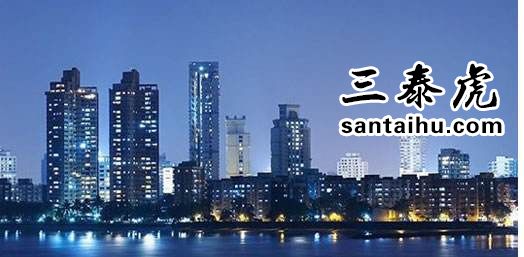What will India be like in 2030?
2030年的印度会是什么样的呢?

【美版知乎quora网贴翻译】
Balaji Viswanathan, Indian by Birth. Indian by Thought.
Updated Dec 5
By 2030, India should be getting ready for a decade of slog that can get us developed by 2040.
Metro trains
Currently, India is going through a massive connectivity exercise. How metro rail networks are spreading across India We are building metro rails at a massive pace. A decade ago we had just two metro rail systems - the old and small Kolkata metro and the new and small Delhi metro. Delhi metro has grown over 10 times and now metros run in nearly 10 cities. By 2022, we will have metro trains in nearly 30 cities - second only to that time in number of metro lines. The growing length of the list below and cluster of years should show you the hurry.
By 2030, we might use the experience from the early metro trains and build new ones at a rapid rate and I expect to see 100 such metro lines. And the ridership in some of the new metro lines that are a mere novelty [such as in Lucknow/Mumbai] will turn to be lifelines once more critical areas are covered.译文来源:三泰虎 http://www.santaihu.com/44096.html
到2030年,印度应该为2040年的发达而在做10年准备。
目前,印度正进行大规模互联互通工程。地铁网络是如何在印度铺开的,我们以惊人的速度建设铁路。十年前,我们只有一条地铁,短而旧的加尔各答地铁以及新却短的德里地铁。德里地铁已经延长了10倍,如今有近10个城市开通了地铁。到2022年,我们将有近30个城市开通地铁,仅次于地铁。
到了2030年,我们或许会利用从早期修建地铁积累的经验,迅速建起新地铁,预计会开通100条地铁。一旦覆盖了关键区域,一些新地铁将成为生命线。
Realigning population
With nearly 100 such metropolitan transit systems we are looking at realigning India’s population. When railways was introduced in 1853 it realigned India’s population especially in west and south. And now we will see bigger than ever with these 100 metropolises taking more than half of nation’s population and becoming the new drivers of growth. Instead of 5 elephants [Delhi, Mumbai, Bengaluru, Chennai, Hyderabad] pulling India - we would have 100 elephants.
We are building railway tracks at a record rate of 13km of new tracks every day [Indian Railways to decongest by laying new tracks, constructing 3 new corridors] and record breaking 22km of new road every day [Bitumen?imports jump as highway expansion drive picks up pace]. The first of bullet trains should be ready by 2022 and we might use it to build 10 other connections by 2030. The effect of these new roads and railways will slowly start emerging soon.调整人口:
印度有将近100个这样的城市交通系统,我们正考虑重新调整印度人口。1853年当铁路被引进时,改变了印度人口的分布,特别是西部和北部人口。现在我们将看到比现在都大的100座大都市,占据全国人口一半以上,成为新的增长动力。印度将不是由五头象(德里、孟买、孟加拉、印度、海得拉巴)拉动,而是100头大象。
我们将以13公里每天的新纪录速度建设铁路,并打破每天22公里的公路修建记录。第一批高铁应该在2022年前完成,或许会在2030年前建设另外10条高铁。这些铁路和公路的影响会很快显露。
Energy, environment and Internet
To support these systems are the solar power generation that is happening at a record pace[India’s solar capacity expands by record 5,525.98 MW, doubling growth] and we have built massive plants including the world’s largest: India built the world’s largest solar plant in record time. At this rate by 2030, India would be producing majority of its power from solar, wind and nuclear cleaning up the environment and reducing energy dependence. By 2022, this would help achieve the Power for all vision [PM Modi launches Saubhagya scheme: 10 points].
Electrification of railway tracks are also proceeding at a record pace of 2000–4000km/year [48 per cent rail tracks electrified, aim to double it in 5 years: Govt] and by 2030 we are sure to have gone past Diesel locomotives - both reducing the cost of transportation as well as having lower pollution.能源、环境、互联网
支持这些系统的是太阳能发电,速度也是创纪录的。(印度的太阳能发电能力达到5525.98兆瓦,增长了一倍),我们还建造了包括世界最大的工厂在内的大型(太阳能)工厂。照这个速度,在2030年前,印度将从太阳能、风能、核能中获得绝大部分的能源,从而改善环境,减少对能源的依赖。
铁路电气化也以创纪录的速度进行着,即2000KM~4000km/年。到2030年,柴油机车会被淘汰,不仅降低交通成本,又减少了污染。
Then there is massive push on internet connectivity. [1,50,000 villages in India to have internet connectivity: Are Rural Start-ups soon to become a reality?] As 5G rolls out [5G in India: Mobile internet will make Digital India vision come true] and more Indians see the use of WhatsApp and Youtube, Internet connectivity is to become universal by 2023 and by 2030, our level of connectivity and data is likely to be on par with the developed world.
By 2030, our cities will be running viable metro transits, our power will be predominantly solar and we will all be networked with broadband.然后是大规模的互联网连接。(印度15万个农村通了互联网:农村新创公司会马上成为现实吗?)
5G推出后,越来越多的印度人用上了WhatsApp和Youtube,到了2023年互联网接入将普及;2030年,我们的接入和数据水平将与发达国家持平。到了2030年,我们的城市会通上地铁,电力将主要为太阳能,都将连上宽带。
Manufacturing
As our connectivity improves dramatically and we produce power at a record rate, we should look to push full on manufacturing. The new cities would reduce pressure off our main 5 metropolises and would have cheap and convenient alternatives just like what happened in US and after they built a variety of new cities. As the real estate costs go low and same with transportation and power, we can truly use India’s cheap labor costs and better legal system[compared to much of develo world] and multilingual comfort to produce a real industrial revolution.制造业
随着交通出行的改善,随着发电速度创纪录,接下来就是大力推动制造业发展。新兴城市将会减轻印度5大都市的压力,让人们有了替代选择,就像和美国在建设许多新城市之后发生的情况一样。随着房地产、交通和电力成本的降低,我们可能真正利用印度廉价的劳动力和更健全的法律体系(与众多发展家相比)和多语言的辩解,去创造一场真正的工业革命。
 Quora讨论:印度会成为超级大国吗?
Quora讨论:印度会成为超级大国吗?